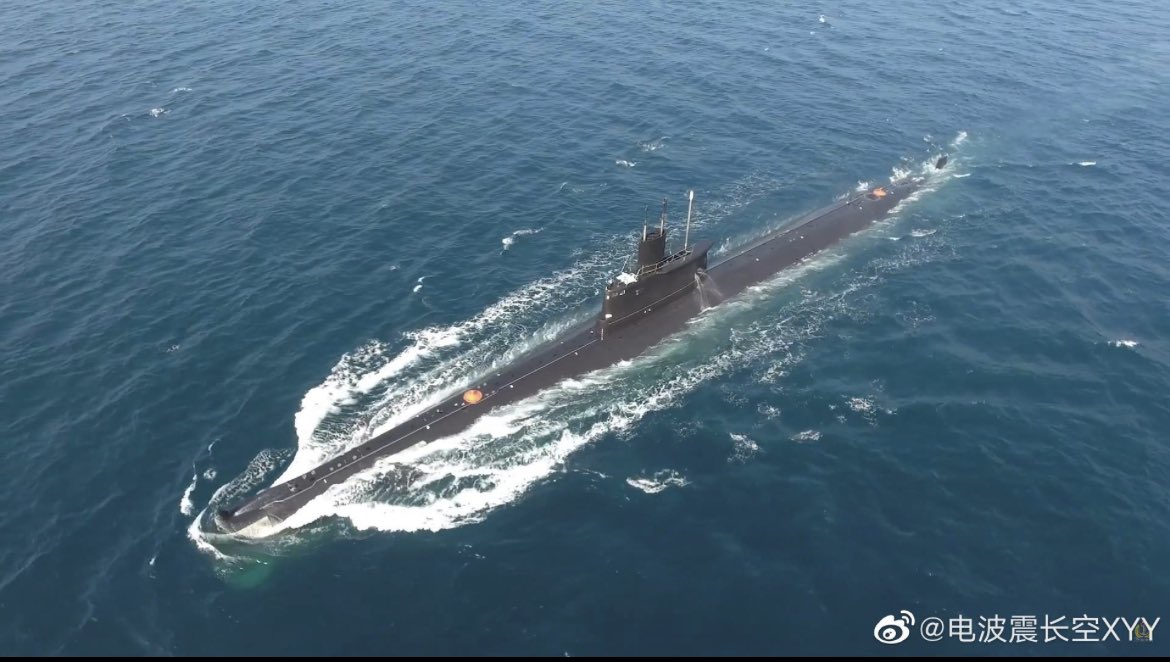A Great Game is afoot in the resource-rich Bay of Bengal region. Apart from building naval bases in the larger Indian Ocean Region to augment the reach of its navy, China is also aiding the littoral countries in the Bay of Bengal to develop their sea legs. Most recently, it has helped Bangladesh build a submarine base for its Chinese-supplied subs.
The Bay of Bengal lies on top of the sea lanes of communication that connect China, Japan, and Korea with the Middle East and Africa, and through these lanes, half of the world trade passes.
The region is essential for the US policy of a ‘Free, open and inclusive Indo-Pacific,’ a euphemism for checking the assertiveness of China.
It is the largest bay in the world, ensconced between India on the East and Indonesia on the West; while Bangladesh, Sri Lanka, and Myanmar are littoral countries. The economic, diplomatic, and security importance of the region attracts major powers in the East and the West (China, Japan, India, the US, and even Russia).
India considers the Bay of Bengal as its immediate area of dominance and has been augmenting the military capability of the littoral countries. However, China has beaten India to the punch with its spending power.
Bangladesh Prime Minister Sheikh Hasina unveiled the country’s first submarine base called BNS Sheikh Hasina, located in Cox’s Bazaar.
The ‘state-of-the-art’ submarine base was constructed with China’s help under a contract signed in September 2019. The submarine facility can berth six submarines and eight naval vessels simultaneously.
With the country having two submarines of its own, Bangladesh’s PM said that besides helping the country to protect its maritime assets, the base would benefit the “vessels traversing the Bay of Bengal.” This means that a Chinese submarine can also dock at the base in the future.
“For India, the presence of Chinese-built submarines in the Bay of Bengal, in a way, makes it a very crowded water body as far as underwater activities are concerned. And it also legitimizes the Chinese presence in more ways than one. It complicates the underwater picture for India,” Commodore (retd) Uday C. Bhaskar, Director of the Society for Policy Studies, told the EurAsian Times.
Bangladesh, erstwhile East Pakistan, once part of British India, became a separate country in 1947. It was liberated in 1971 after a swift war fought between Pakistan and Indian armed forces.
The shared history and ties meant that India traditionally had strong relations with Bangladesh. But, in 2016, Xi Jinping became the first Chinese President to visit Bangladesh, and he came bearing gifts.
After the trip, Bangladesh purchased two used Type-035G Ming-class submarines. Purchased for US$203 million and commissioned in the Bangladesh Navy as BNS Nabajatra and Joyjatra, these submarines have typical Ming-class features.
It can deploy weapons such as Yu-3 and Yu-4 heavyweight torpedoes. The undersea vessel can carry 14 torpedoes or 32 naval mines. The submarines have integrated sonar and electronic warfare suites, Chinese derivatives of Western origin systems.

The two submarines in the Bangladesh Navy don’t pose a significant threat to India, the Asian giant that surrounds Bangladesh from three sides and has a substantial strategic interest in the Bay of Bengal. But the two submarines did come with Chinese officials onboard to train and familiarize the Bangladesh crew with the vessels.
Also, the submarine base will need maintenance and operational support from Chinese personnel. Its proximity to India’s Eastern Naval Command, where its indigenous nuclear submarine is under construction, is a cause of concern.
So, in a way, the Chinese presence in the Bay of Bengal to help the Bangladesh Navy will give them a front to gather information to aid Chinese submarine operations in the region.
Strategic Importance Of The Bay Of Bengal
The Bay of Bengal is a significant part of the Indian Ocean Region, straddling from Africa to Indonesia. The Bay of Bengal, nestled between India, Myanmar, and Bangladesh, sits on one of the world’s most important strategic chokepoints, the Strait of Malacca that connects the Indian Ocean with the South China Sea.
Elaborating on the importance of the Bay of Bengal, Commodore Bhaskar said: “It is a very important water body for Southern Asia and not just for South Asia. This is because the water body provides connectivity for India with ASEAN. And second, it is proximate to the most important choke point of the Indian Ocean, the Malacca Strait.”
China and India are both aware of the importance of the Strait of Malacca for their burgeoning economies. Owing to this, both countries have become increasingly involved with the coastal countries.
The countries around the Bay of Bengal are home to a quarter of the world’s population with a cumulative GDP of USD 3 trillion. The countries have been benefiting by offshoring the labor-intensive activities from the developed countries.
“China has long sought access to the BoB and the Arabian Sea because of its limited and unfavorable maritime geography, particularly along the Western Pacific. The entry into the BoB for China is being facilitated considerably earlier by Myanmar and now by Bangladesh,” Commodore Bhaskar added.
The Bay of Bengal is also believed to be saddled with significant gas reserves. According to some estimates, Bangladesh’s reserves are at 200 trillion cubic feet, making it the largest in Asia-Pacific. Myanmar has the fourth largest proven natural gas reserves in Asia-Pacific. It exports petroleum gas to both Thailand and China.
The Bay sees an increase in the security realm as well. Multilateral exercises like the Malabar held among India, Japan, the US, and, more recently, Australia have taken place here.

China is furthering its strategic influence in the region under China’s new “Look South” Policy with its twin track of developing One Belt, One Road (OBOR) and deploying its warships and submarines in the region.
Myanmar, Bangladesh, and Thailand have all signed deals with China to buy frigates and submarines for their respective navies.
Despite sending overtures to these littoral states, India lags behind China in terms of having deep pockets. This offers an opportunity for India and the US to collaborate.
“India and the US see eye to eye on the Bay of Bengal,” the earlier US Secretary John Kerry remarked during his visit to New Delhi in 2016. Other countries with vested interests in the region, like Japan, must invest in the littoral states to build their defense and economic capabilities to wean them off the Chinese influence.
Bangladesh has given India permanent access to Chattogram and Mongla ports for the transit and shipment of cargo. This move is significant to India to increase connectivity to its north-eastern region, which covers Bangladesh from three sides.
This will help strengthen India-Bangladesh-Japan trilateral cooperation in constructing a deep sea port at Matarbari.
So far, China is the world’s largest but not really the mightiest navy. But it is getting more confident very fast. Countering its influence in the Bay of Bengal region, which can serve as the fulcrum of the Open Indo-Pacific policy, is imperative for all the powers to be.
- Ritu Sharma has been a journalist for over a decade, writing on defense, foreign affairs, and nuclear technology.
- She can be reached at ritu.sharma (at) mail.com




